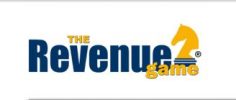Setting expectations happens at all times and in untold ways. Often, they are set by accident, but they should be set very intentionally, which should be the case in the deployment of Revenue Science™ by every member in an organization and especially sales, marketing, and customer service.
Examples of setting expectations you may have seen or heard:
1. Trust Me!
2. Showing up late and not ready.
3. Whatever you want, we got it.
4. Just tell me what you need I will tell you what I have.
5. Just watch my demo and let me tell you about my product.
6. Texting while working on your project.
7. Don’t worry about the price, I will make it right.
8. We have been doing this for a long time, so we must know what we are doing.
9. The price advertised, and the final contract aren’t exactly the same.
10. Sorry I am late – I got hung up.
11. Value-driven, purpose-driven offer with resulting outcomes.
12. No eye contact.
13. Complete transparency.
14. Commitment to both parties winning or both walking away.
15. Stated business principles.
16. Intention and focus on solving very specific customer problems.
17. Metrics for both the delivery process and outcomes.
18. Brand Promise to customers, staff, partners and the community.
19. How to work jointly with customers to define the SOW before final specs, pricing or timelines are frozen.
Looking at the nineteen “Have You Heard” examples above, certain examples are intentionally open to various expectations, while others are designed to enhance clarity and understanding.
There are a variety of strategies on setting and managing expectations which determine relationships and outcomes between businesses and people.
Much that shows up as advertising (think late night and political ads) is presented so the listener or reader can insert whatever they wish to support or justify their expectations. This justification is based on the listeners’ experience, beliefs, and desires. The result is the advertiser is embraced by those looking for shared beliefs and since the advertiser wants followers they message to accommodate the listeners actual or imagined crusade. These vague expectations are intentionally presented to meet the listeners need for justification and support of their vision. For many, this support is more important than having expectations reflecting reality.
Humans value their beliefs and if they can view a statement as being in alignment with their beliefs they will often continue to do so over time and never challenge the reality or full extent of the message. We see this with political parties, our favorite brands, sports or movie heroes and family members we are compelled to support. In these cases, we have our expectations from a trusted source or message or from history and are unlikely to change.
Expectations for most of B2B (Business to Business) are formed differently. Often in the B2B world expectations precede an action that delivers an outcome and a few or many humans are going to review the outcomes, the actions and what the expectations were that drove this chain.
Because of the B2B visibility, the accountability and possible financial impact expectations most often are looked at in relation to their alignment to the real world. It is not enough to set the expectation that you can build a bridge. You have the certifications, licenses, degrees, bonding, balance sheet and proof you have done it before. (Not so with late-night advertising or those who want your vote.)
The digital world and social media encourage and support transparency for almost any expectation verification imaginable. What is said in a sales call, in an ad, on the web, posted in a blog or promised in a webinar can be researched fast.
Research will show – a “yes” looks like the expectation and the reality match or “no”, nothing out there supports the expectation or I can’t find anything which does, which is scariest of all.
In the B2B world setting expectations gets complex. Those who will make their living in the B2B world would do well to apply Revenue Science™ the “Safest Way” to manage the process of setting and exceeding the expectations with the various people, roles, Business Units, factions that are what make things complex such as:
Different internal departments that are part of the opportunity
Professional disciplines who impact the deal
o Engineers
o Sales
o Finance
o Etc.
Career requirements – whose career is impacted by this opportunity
Locations that are impacted by this opportunity
Types of focus
o Cost
o Deliver
o Long-term ROI
o Ease of use
o Image
o Risk
o Payment Plan
o Integrity
o Etc.
People who have different beliefs
o CFO – is this about cost or growth
o COO – what is the impact on operations
o Sales VP – will we sell more in shorter cycles
o ETC.
If B2B holds the financial keys to success then understanding the science, having the tools and managing a continuous improvement process to set and exceed these various expectations is at least as important as your product or service.
The value a single buyer receives let alone a company of buyers never exceeds their expectation of value. If you are able to meet that value, exceed that value or reframe it at whole new value level you have elevated your available income from your offer.
Your success will never exceed your ability to set the buyer expectations equal to the highest value you can actually deliver. If you don’t set the expectations at that highest level and then be sure the buyer’s perception of value matches yours then the buyer will only pay you for their level of expectation, regardless how great the value of the final deliverable.
Take the time to learn and apply Revenue Science™ the “Safest Way” for setting expectations and getting paid for your full value.
